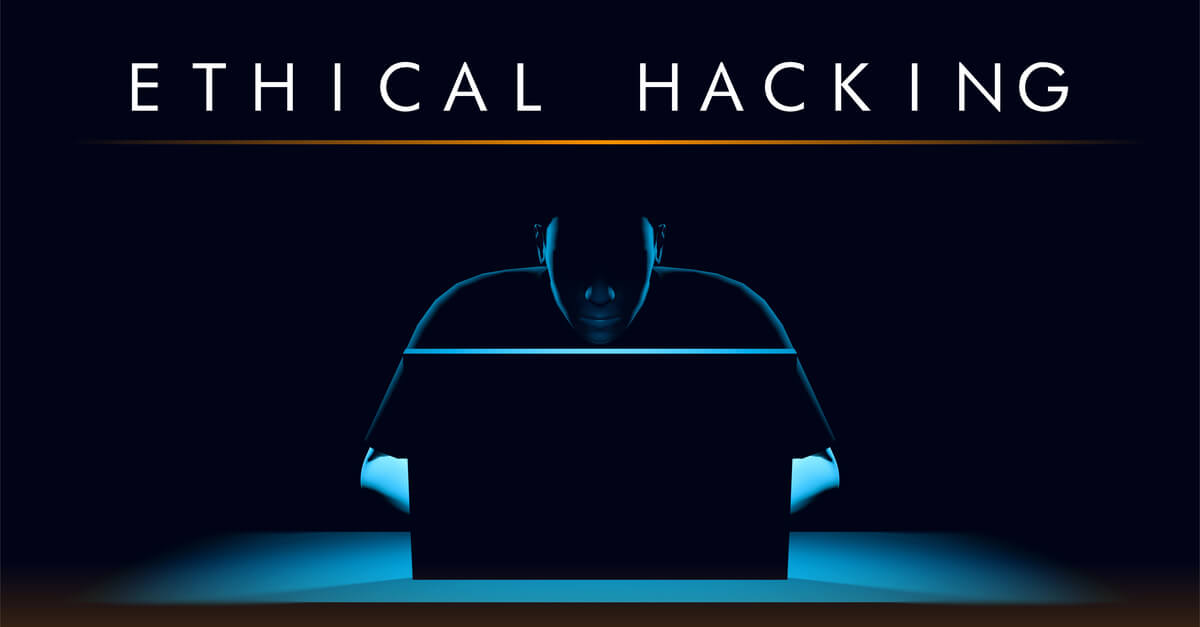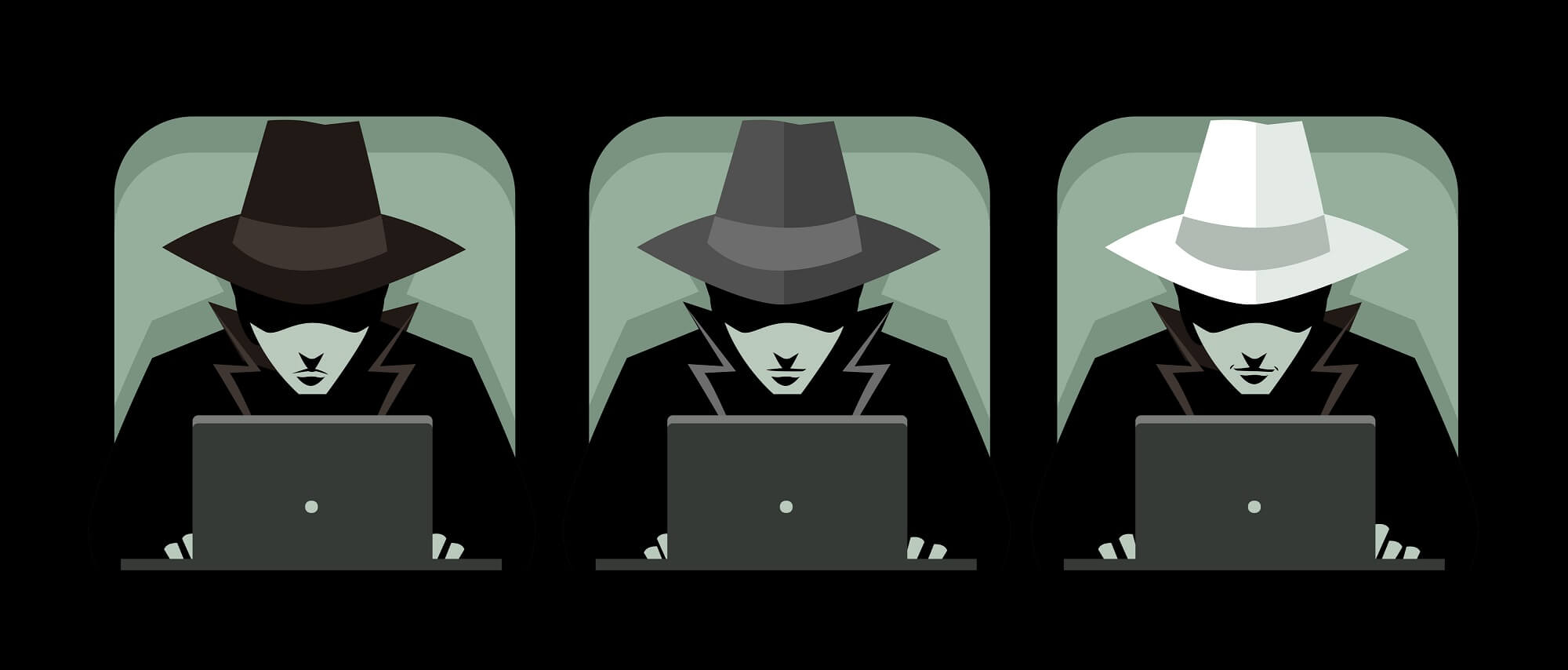In the modern digital world, we put ourselves and our data at risk each day when we connect to the internet. The number of rising cyber threats has made it almost impossible to guarantee our digital safety and it has become imperative for businesses and individuals alike to obtain more advanced means of cybersecurity.
However, simply reinforcing security measures won’t always be enough, and sometimes a more active approach is needed to root out any cyber vulnerabilities in a network. Threat detection relies on seeking out potential malware and anomalies in a system and one way to ensure that is through the use of ethical hacking.
What Is Ethical Hacking?
When people hear the word “hacking”, they immediately envision an ominous figure bent over a laptop trying to commit all sorts of nefarious deeds. Hacking, according to the Merriam-webster dictionary, is the gaining of illegal access to a computer network or system – a definition that has stuck for most people. Nevertheless, the term does not always need to infer a criminal element.

Ethical hacking is, as the name suggests, the intrusion into a network with ethical motivations. The process is an authorized breach of network security protocols to identify cyber vulnerabilities in a system. Ethical hackers are trained and professional cybersecurity experts who help organizations uncover weak areas in their defenses by exposing them and providing support to improve security.
Consider the adage “it takes a thief to catch a thief” – ethical hackers are hired by organizations to leverage their knowledge of threat detection measures, as well as all the ways to bypass those measures, to provide a fully comprehensive assessment of a company’s cybersecurity standing. Hackers can broadly be defined into 3 categories:

Black Hat Hackers
These are the more stereotypical malicious hackers – using their skills with criminal motives. Black hat hacking is the unlawful intrusion into a network to exfiltrate data and exploit any weakness in a company’s security system. The primary agenda for this type of hacking is monetary – usually in the form of ransomware attacks.
White Hat Hackers
These are the cybersecurity experts that are legally hired by companies and organizations to infiltrate systems and provide them with a security evaluation. They assist companies and governments by applying hacking techniques and identifying security flaws. They are well-intentioned and assist in finding cyber vulnerabilities and improving overall security measures. White hat hackers mostly use the same tools and techniques as black hat hackers - ranging from documented public rootkits to more complex campaigns such as social engineering, exploiting endpoint vulnerabilities, presenting attack decoys, spoofing protocols, and many more
Grey Hat Hackers
Finally, as the name suggests, grey hat hacking is a blend of both white hat hacking and black hat hacking. Grey hat hackers will access a company’s network without their permission but can have ambivalent intentions. These hackers could approach companies with information about their cyber vulnerabilities or simply release them online for no personal gain. This form of hacking is usually done for fun to test a cybersecurity expert’s skills unconventionally. Regardless, both grey hat and black hat hacking are illegal as they both constitute an unauthorized system breach, even though the intentions of both types of hackers differ.
Now that we know that different forms of hacking do exist, we can focus on how to utilize ethical hacking processes to improve cybersecurity measures.
How to Use Ethical Hacking for Threat Detection and to Identify Cyber Vulnerabilities?
Ethical hacking can help organizations discover cyber vulnerabilities that other, more inclined hackers could potentially exploit – making them possibly the best measure of a company’s readiness in the face of a cyber-attack.
These hackers apply different techniques to improve cybersecurity measures:
Penetration testing
Penetration testing, also known as pen testing, involves trained experts testing a computer or network system to find any security vulnerabilities. During a pen test, a simulated cyber-attack is launched on an organization’s network either through automated software or manually. The test identifies any entry points and weak spots that can be exploited to gain access to the system. Pen tests are usually carried out by third-party contractors as opposed to internal cybersecurity teams to properly emulate an outsider hacker with no knowledge of the internal structure of your company’s network.
Vulnerability assessments
Ethical hackers may also use vulnerability assessments to identify, classify, and prioritize cyber vulnerabilities in a network. They can then offer the organization options on how to fix these liabilities. Vulnerability assessments usually use a mix of manual and automated processes to target exposures continuously.
Both penetration testing and vulnerability assessments scan for weaknesses, test entry points, prioritize targets and develop strategies to defend network systems.
Ethical hackers perform reconnaissance from within the network to find the weak spots but take it a step further and actively try to exploit them – thereby testing the network’s security protocols. Key vulnerability areas monitored include:
- Injection attacks
- Changes in security settings
- Exfiltration of sensitive data
- Breaches in authentication protocols
- Any component used in the network that can be used as an access point
Ethical hackers have many use cases to improve an organization’s overall cybersecurity, including but not limited to:
- The testing of password strength
- Ensuring security settings and privilege levels in the domain account and database administration by testing out exploits
- Penetration testing after every software update or after adding a new security patch
- Ensuring that data communication channels cannot be intercepted
- Testing validity of authentication protocols
- Ensuring security features in applications, which protect organizational and user databases
- Defense against denial-of-service attacks
After the testing period, ethical hackers will prepare a detailed report of all the steps taken to compromise a company’s network, the discovered vulnerabilities, and all the steps that can be taken to patch or mitigate them. Making use of ethical hacking helps with building trust for customers and investors that your company’s data is secure after thorough testing.
While ethical hacking is a company of cybersecurity, they perform very different operations and include different roles and responsibilities.
The Role of a Cyber Security Expert and an Ethical Hacker in an Enterprise’s Security
Ethical Hacking is the performance of planned cyber-attacks by professionals to identify and exploit weaknesses in a network while cybersecurity employs experts to defend the network from attacks.
While these roles seem quite contrary, they both have the same end motivation – to improve the cybersecurity of an organization.
Cybersecurity experts have a specific set of roles which include:
- Performing regular audits to discover inefficiencies in the system.
- Implementing the most efficient technologies to improve security measures.
- Regularly maintaining and updating security systems.
- Assigning access privileges to trusted and allowed agents.
- Explaining the consequences and details of a malware attack to the company.
- Providing suggestions for improving the company’s security system.
Alternately, ethical hackers have a different list of roles:
- Evaluating the performance of a system by testing it for various security breaches.
- Testing security systems for any flaws they could potentially exploit.
- Performing regular pen tests on the system, web application, and network to spot any vulnerabilities.
- Generating reports after finding any weak spots and providing feedback once those issues are resolved.
- Informing the organization about how the attack can affect its operations and users.
- Using hacking techniques that will pointedly uncover weak spots.
The roles of a cybersecurity expert and an ethical hacker differ in means but ultimately, they have the same objective of improving and safeguarding the network’s system.

Open Source Threat Detection Platforms for Ethical Hackers
While ethical hacking might be a great way to ensure your company’s defenses are tried and tested, the platform used to evaluate that standing needs to be up-to-date and accessible. This is why open-source platforms for ethical hacking work so well.
Open-source threat detection platforms make use of threat intelligence data obtained from public open sources such as security forums, and national and international security announcement lists and can be used by ethical hackers to perform more efficient assessments.
A few open-source platforms for threat detection are:
- MISP: MISP is an open-source threat intelligence platform that develops utilities and documentation for more effective threat intelligence by sharing indicators of compromise. It can be used for sharing, storing, and correlating Indicators of compromise for targeted attacks and providing threat intelligence - such as threat actor information, financial fraud information, and many more. MISP users benefit from collaborative knowledge about existing malware or threats. This trusted platform aims to help improve the countermeasures used against targeted attacks and set up preventive actions and detection.
- OpenCTI: The OpenCTI project is a platform meant for processing and sharing cyber intelligence. It was developed by the French national cybersecurity agency (ANSSI) and was initially designed to develop and facilitate the agency’s interactions with its partners. Today, the platform has been fully released in open source and made available to the entire cyber threat intelligence community to allow the actors to structure, store, organize, visualize, and share their knowledge.
- Harpoon: Harpoon is a tool used to automate threat intelligence and open-source intelligence tasks. It is written in Python 3 and organized in plugins - to ensure one plugin per platform or task.
- Yeti: Yeti is a platform meant to organize observables, indicators of compromise, TTPs, and knowledge on cyber threats in a single, unified repository. The platform will also automatically enrich observables such as resolve domains and geolocate Ips, and provides an interface for humans and one for machines.
While ethical hacking may be a quintessential part of cybersecurity, installing and ensuring the best technologies are used at your company should always be a priority for your company.
Sangfor’s Threat Detection Tools and Platforms for Businesses
Sangfor offers advanced threat intelligence and cybersecurity services for your company that can collaborate and coordinate skilled protocols to ensure that the highest security measures are maintained.
Some of Sangfor’s most innovative and comprehensive cybersecurity solutions include:
Sangfor's Threat Identification, Analysis, and Risk Assessment (TIARA)
Sangfor’s Threat Identification, Analysis, and Risk Assessment (TIARA) platform is a preliminary security posture assessment service that relies on the expertise of professionals in the field to provide capabilities for a network and helps customers understand their current threat posture within just 2-4 weeks.
The lightweight turnkey service leverages the automated detection and response capability of Sangfor’s threat intelligence platform to help customers with insufficient security expertise understand their threat landscape, improve their detection time, and rapidly improve their security posture.
Additionally, TIARA provides recommendations, improvement plans, and remediation assistance for an organization to take its overall security posture to the next level and makes network security assessment easy and automated - allowing administrators to address vulnerabilities and prevent black hat hackers from undermining the network.
How Sangfor’s TIARA Services can benefit your organization:
- Provides detailed and intensive awareness of your company’s current security status and delivers a clear and comprehensive guide on how to improve the overall security posture of your organization.
- Significantly reduces the risk of exposure to potential hackers and malware while decreasing the security incident impact on your business in the event of a breach.
- Increases the effectiveness and efficiency of your organization’s existing internal resources.
- Raises the security and risk awareness among your company’s internal employees – thereby lessening the chances of an accidental security breach from occurring.
For more information please refer to the Sangfor TIARA & MDR service brochure.
Cyber Command (NDR) Platform
The Sangfor Cyber Command (NDR) Platform tool helps to monitor for malware, residual security events, and future potential compromises in your network. The Cyber Command solution is coupled with an enhanced AI algorithm to keep you updated with any vulnerabilities in the system and monitors for malware, residual security events, and future potential compromises in your network – ensuring your data is always kept strictly protected and consistently monitoring your system for lingering threats.
Sangfor’s Endpoint Secure
This powerful endpoint security solution goes beyond traditional antivirus and anti-malware software and leverages Sangfor’s proprietary Engine Zero AI-powered malware detection engine and Neural-X threat intelligence platform to deliver unrivaled malware protection for endpoints.
Securing your network from all points, Endpoint Secure provides integrated protection against malware infections and APT breaches across your entire organization's network – all with ease of management, operation, and maintenance. The platform also received the AV-TEST “Top Product” award for achieving 100% ransomware protection against zero-day malware.
Sangfor’s Next Generation Firewall (NGFW)
Lastly, the Sangfor Next Generation Firewall (NGFW) is used in conjunction with Endpoint Security to identify malicious files at both the network level and endpoints. The advanced firewall is a security device designed to inspect network and application traffic for threats, secure the network environment from intrusion, and bring in security intelligence from outside the network. Anything that the on-premises features cannot analyze is automatically sent to the cloud-based Neural-X sandbox for isolation and critical inspection.
Frequently Asked Questions
Ethical hacking is performed by professionals who are authorized to infiltrate a company’s network to provide solutions to the vulnerabilities they expose. Cybersecurity, on the other hand, is controlled by experts whose primary purpose is to protect the system from hostile actions and ensure that no attack is successful.
Yes, to ascertain a higher degree of cybersecurity measures for your company, ethical hacking will complement your existing security infrastructure and ensure your organization is protected in the event of a cyber-attack.





